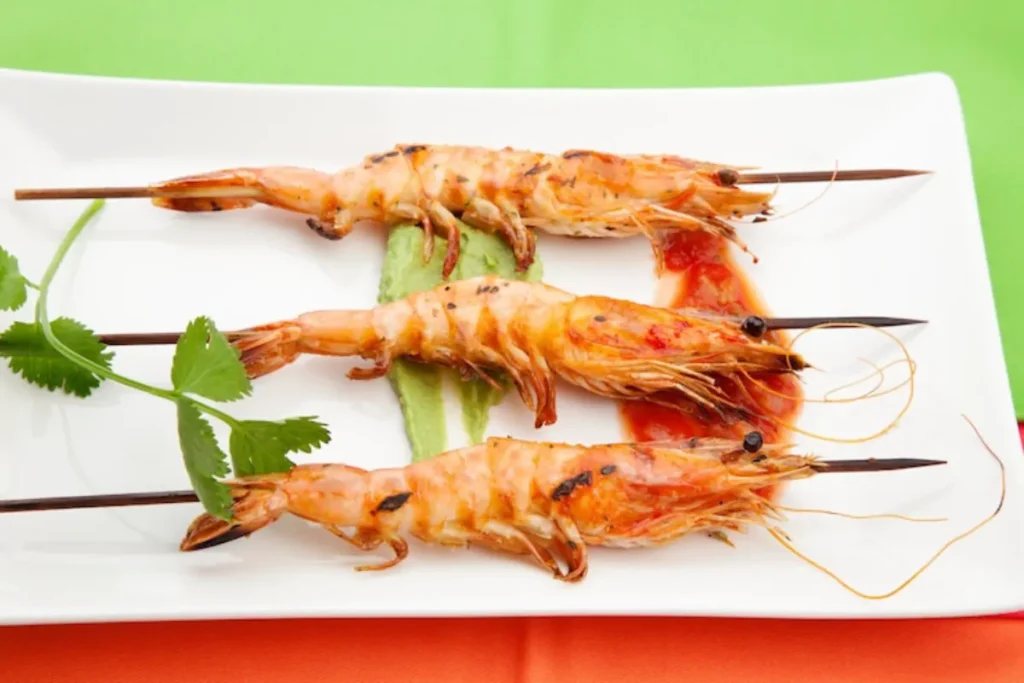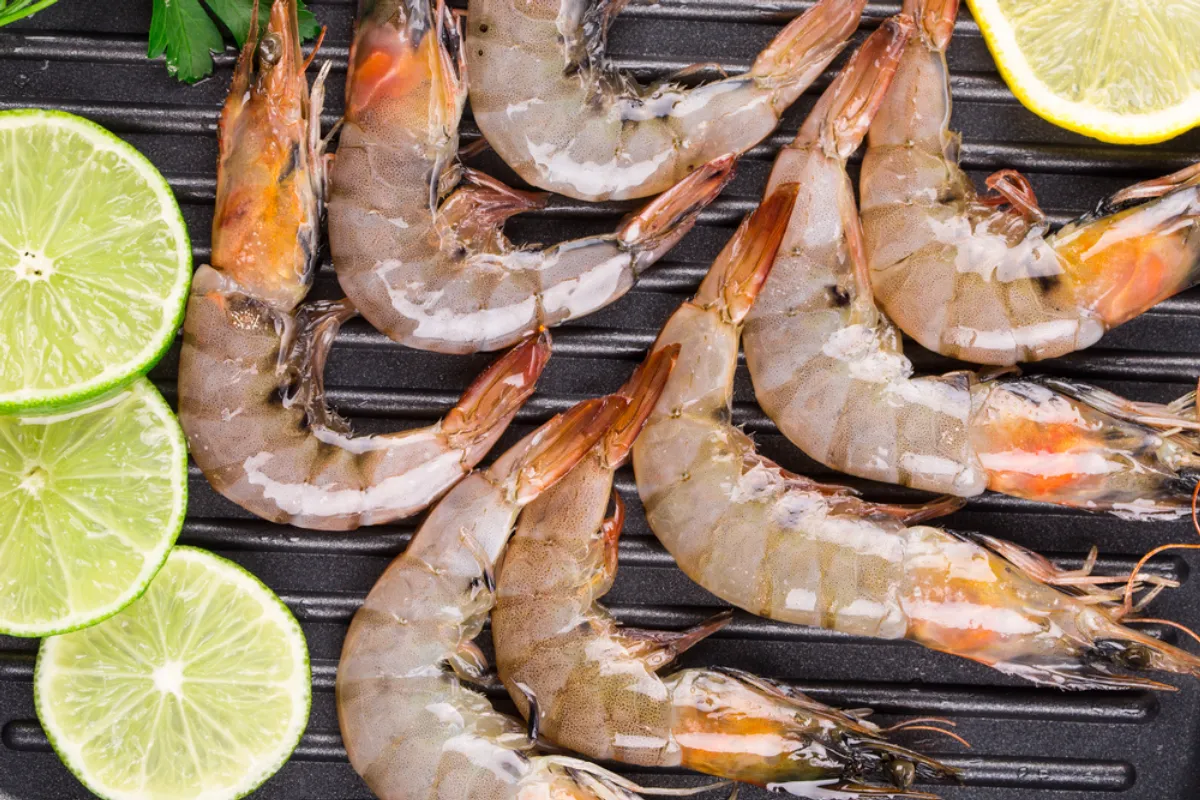When it comes to seafood, the world is filled with a diverse range of options, but one type that tends to fly under the radar is langostino. You may have come across langostino tails at your local seafood market or heard about them in a recipe, but what exactly is a langostino tail? Despite their small size and their similarities to shrimp or lobster, langostino tails offer a unique flavor and texture that make them worth exploring.
This article dives deep into the world of langostino tails, where they come from, how they differ from other seafood, and the best ways to cook them. Along the way, we’ll explore delicious recipes and tips for making the most of this tasty ingredient.
The Origins of Langostino
To fully understand what a langostino tail is, it helps to start with the basics. The term “langostino” is Spanish, but the word can be confusing, as it means different things in various regions. In Spain, for instance, “langostino” refers to a prawn, which isn’t the same as langostino as we know it in the U.S. In America, langostino refers to a species of crustacean that is a member of the squat lobster family.
While langostino looks like a miniature lobster or shrimp, it is technically neither. Instead, it’s a distinct species that shares characteristics with both shrimp and lobster, offering a flavor that falls somewhere in between the two. Most langostinos come from the waters around Chile and Peru, where they are harvested and frozen before being exported worldwide.
Langostino tails are often marketed as a more affordable substitute for lobster or shrimp. But they deserve attention in their own right, offering a slightly sweet flavor and a tender, delicate texture. They are versatile, delicious, and easy to work with, making them a fantastic ingredient for home cooks.
Langostino Tails vs. Lobster: What’s the Difference?
One common question many people have is whether langostino tails are the same as lobster tails. While both belong to the crustacean family, they have distinct differences. Lobster is typically larger, with a firm, dense texture, while langostinos are much smaller and more delicate.
When it comes to flavor, langostinos are sweeter than shrimp but not quite as rich as lobster. Their taste is light, which allows them to pair well with various sauces and ingredients without overpowering other flavors. Langostino tails are bite-sized and easier to work with compared to large lobster tails, making them perfect for quick meals or small dishes like tacos or appetizers.
Another difference is cost. Langostino tails are often more affordable than lobster tails, which makes them an appealing choice for anyone looking to enjoy a luxurious seafood dish without breaking the bank. They offer the rich, oceanic flavor of lobster but at a fraction of the price.

How to Buy Langostino Tails
Before you can cook with langostino tails, you’ll need to know where to find them. Since they aren’t as commonly available as shrimp or lobster, it may require a bit of searching to track them down. Fortunately, there are a few reliable places to find langostino tails.
- Specialty Seafood Markets: If you live near the coast or have access to a good seafood market, you may be able to find fresh or frozen langostino tails. These markets often carry a wider variety of seafood, including more niche options like langostino.
- Grocery Stores: Many larger grocery stores with robust seafood departments carry frozen langostino tails. Look in the frozen seafood section, as langostinos are typically sold pre-cooked and frozen.
- Online Retailers: If you can’t find langostino tails locally, there are plenty of online seafood retailers that will ship frozen langostino tails straight to your door. This is a great option if you want high-quality langostino without leaving the house.
When purchasing langostino, make sure the product is well-sealed and frozen properly. The fresher the product, the better the flavor will be when you prepare it at home. Since langostino tails are usually pre-cooked, they are quick and easy to incorporate into a variety of recipes.
Cooking with Langostino Tails
Now that you know what a langostino tail is and where to find them, let’s dive into how to cook with this delicious seafood. Langostino tails are incredibly versatile and can be used in a wide range of dishes. They’re pre-cooked, so you won’t have to worry about extensive preparation. All they need is a quick sauté or reheat to bring out their flavor.
Here are a few cooking methods and tips for working with langostino tails:
1. Sautéing Langostino Tails
One of the easiest ways to cook langostino tails is by sautéing them in butter or olive oil. Since they are already cooked, you’re mainly reheating them and adding flavor. Simply heat some butter or oil in a pan, add minced garlic or herbs, and toss the thawed langostino tails in the pan. Sauté them for about 3-5 minutes until they are warmed through and infused with the flavor of the garlic and butter.
This method works well if you’re looking for a quick appetizer or a simple protein to add to pasta, rice, or salads.
2. Grilling Langostino Tails
For a smoky, grilled flavor, try placing your langostino tails on the grill. Since they are small, consider skewering them or using a grill basket to prevent them from falling through the grates. Brush them with a marinade or simply drizzle with olive oil and lemon juice, then grill for 2-3 minutes per side until they are lightly charred and heated through.
Grilled langostino tails are perfect for serving over fresh salads, in tacos, or as a topping for seafood platters.
3. Incorporating into Pasta
Langostino tails are fantastic when tossed into pasta dishes. Their sweet, tender meat pairs beautifully with rich, creamy sauces or light, citrus-based sauces. You can simply toss langostino into your pasta sauce at the very end of cooking and allow them to heat through. Pair them with linguine or fettuccine, add some garlic and herbs, and top with freshly grated Parmesan cheese for an easy yet elegant meal.
Delicious Langostino Tail Recipes
If you’re ready to start cooking with langostino tails, here are some mouthwatering recipes to try at home. These recipes highlight the unique flavor of langostino while being easy to prepare. Whether you’re looking for a quick dinner or something to impress your guests, these dishes will bring out the best in this versatile seafood.
Recipe 1: Creamy Garlic Langostino Pasta
Ingredients:
- 1 pound langostino tails, thawed
- 8 oz fettuccine or linguine
- 4 tablespoons butter
- 4 garlic cloves, minced
- 1 cup heavy cream
- ½ cup Parmesan cheese, grated
- Juice of 1 lemon
- Salt and pepper, to taste
- Fresh parsley for garnish
Instructions:
- Cook the pasta: Start by boiling your pasta in a large pot of salted water until al dente. Drain and set aside.
- Sauté the garlic: In a large skillet, melt the butter over medium heat. Add the minced garlic and sauté for 1-2 minutes until fragrant.
- Add the langostino tails: Stir the thawed langostino tails into the garlic butter, cooking them for 3-4 minutes.
- Make the sauce: Pour in the heavy cream and bring to a simmer. Add the Parmesan cheese and lemon juice, stirring until the sauce thickens. Season with salt and pepper to taste.
- Combine with pasta: Toss the cooked pasta in the sauce, ensuring it’s evenly coated. Garnish with fresh parsley and serve immediately.
Recipe 2: Langostino Tacos with Lime Crema
Ingredients:
- 1 pound langostino tails, thawed
- 8 small corn tortillas
- 2 cups shredded cabbage
- ½ cup sour cream
- Juice of 2 limes
- 1 tablespoon olive oil
- 1 garlic clove, minced
- Fresh cilantro for garnish
- Salt and pepper, to taste
Instructions:
- Make the lime crema: In a small bowl, mix together the sour cream, lime juice, and minced garlic. Season with salt and pepper.
- Warm the langostino tails: Heat the olive oil in a pan over medium heat. Add the langostino tails and sauté for 3-4 minutes until heated through.
- Assemble the tacos: Warm the corn tortillas in a skillet or microwave. Fill each tortilla with a handful of shredded cabbage and a portion of langostino tails.
- Top with crema: Drizzle the lime crema over the tacos and garnish with fresh cilantro. Serve immediately for a light, flavorful meal.
Tips for Cooking with Langostino
Working with langostino tails is easy once you get the hang of it, but there are a few tips to ensure you get the best results every time.
1. Avoid Overcooking
Langostino tails are delicate and already pre-cooked, so they only need to be reheated. Overcooking them can make them tough or rubbery, so be mindful of the time they spend on the heat. A quick sauté or gentle reheat is all that’s needed to bring out their flavor.
2. Pair with Bold Flavors
Since langostino has a mild sweetness, it pairs well with bold, savory flavors. Garlic, lemon, butter, and fresh herbs like parsley or cilantro are excellent choices. You can also experiment with spice by adding red pepper flakes or smoky paprika for a bit of heat.
3. Use in a Variety of Dishes
Langostino tails are incredibly versatile. Don’t be afraid to use them in creative ways—add them to soups, fold them into omelets, or serve them atop avocado toast for a seafood twist on brunch.
Conclusion: Why You Should Try Langostino Tails
Langostino tails offer a delicious alternative to more common seafood like shrimp or lobster, with a unique flavor that stands out in any dish. Whether you’re grilling, sautéing, or incorporating them into pasta, langostino brings a sweet, oceanic taste that is both delicate and versatile. With the convenience of pre-cooked, frozen langostino, preparing a gourmet seafood meal at home has never been easier.
Next time you’re at the grocery store or shopping for seafood, consider picking up some langostino tails to try in your favorite recipes. Their sweet flavor and tender texture are sure to impress, whether you’re making tacos, pasta, or a simple sauté.
FAQ
1. What is a langostino tail?
A langostino tail comes from a crustacean similar to shrimp and lobster. It has a sweet, delicate flavor and is often pre-cooked and sold frozen.
2. How is langostino different from lobster?
While langostino has a flavor similar to lobster, it is smaller and has a more tender texture. It is also typically more affordable than lobster.
3. Can I substitute shrimp for langostino in recipes?
Yes, shrimp can be substituted for langostino in most recipes, though the flavor and texture will be slightly different.
4. Where can I buy langostino tails?
Langostino tails are often found in the frozen seafood section of grocery stores, specialty seafood markets, or online retailers.
5. What’s the best way to cook langostino tails?
Langostino tails are pre-cooked, so the best way to cook them is by gently reheating in butter, olive oil, or sauces. Avoid overcooking to maintain their tender texture.
6. What is the difference between lobster tail and langostino tail?
Langoustine meat is similar to lobster meat in texture but more luxurious. The meat from the tail of the crustacean tends to be sweeter than traditional lobster meat. The meat also has a firmer texture. Many see langoustines as the refined, high-end cousin when comparing the two pieces of shellfish
